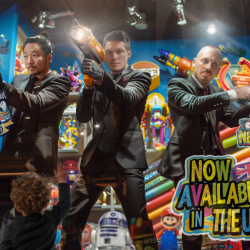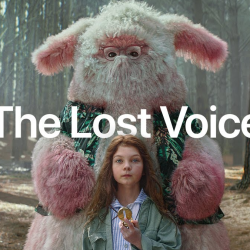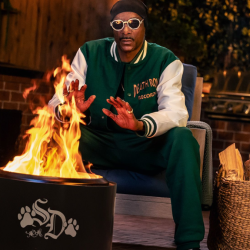In 2020, data suggested that we had arrived at an ‘Age of Discontent’. But interestingly, the data around our collective happiness had already been trending downward well before 2020 and remains a point of concern even three years later. What then, outside of the challenges of that specific moment in history, defines the Age of Discontent? And how do we get out of it?
To understand the role brands can play here, we first have to look at the sociological landscape.
Last year The Atlantic put out an article The Forgotten Joy of Hanging Out in ‘Third Places’. There’s been a flurry of press around ‘Third Places’ since the pandemic hit and we were told we had lost something that most of us had never put words to: ‘public places on neutral ground where people can gather and interact,’ as described by Ray Oldenburg in 1997. These places are ‘third’: following home as our ‘first’ place and work as our ‘second.’ Oldenburg argues that without these shared spaces and their associated experiences and relationships, life becomes ‘jangled and fragmented‘ — an accurate vignette of pandemic life.
Following Oldenburg’s logic, discontent has been building for decades, and was simply pushed over the edge by the emotional impact of extreme isolation combined with losing our third places completely. Just this month a podcast from Ezra Klein with author Sheila Liming (below) investigated why ‘young people now report feeling lonelier than the elderly.‘ Liming argues that humans, as social animals, are simply not hanging out as much as we should be. Back in 2020, humans were collectively experiencing all-time low hang out levels. Levels have crept back up since, but, like Oldenburg, Liming’s concern for the endangerment of hanging out persists today and began well before the pandemic.
Liming and Klein concluded that while time spent with people online is better than nothing, it rarely meets the full depth of our emotional needs — from stilted video calls to impersonal texts and social media that wasn’t really that social. The simple missing piece across each of these options is that you cannot simply hang out — there’s no sense of passive presence, of simply sharing space with someone. Video calls feel like they should offer the best shot, but each little rectangle only seems to crush illusions of shared space, reinforcing that your conversation partner exists on their side of the screen wall, in their own world.
It’s clear that the internet is in desperate need of third places
And the most hopeful experiments might just lie in VR, AR, and gaming. Each of these promises a shared reality and shared presence — the two core pillars of ‘hanging out’. These mediums have the ability to return relationships to shared spaces and experiences, rather than fracturing them across the atomized voids that define texting, emailing, video-calling, and social media. They lend us a much needed movement away from social media (speaking broadly, of any human-turned-text, -image, or -video) to social interaction — the backbone of a successful hang out.
While VR, AR, and gaming may look like a move further into technology and farther away from each other, research by the VHIL has validated that, in these more immersive encounters, we experience a sense of presence and interact with avatars as we would with anyone in non-virtual space. People maintain traditional social graces (e.g. standard body language and respect for personal space) when encountering virtual avatars both in VR and AR — indicating that immersive three dimensionality is affording natural feeling encounters that bring us closer to the experience of hanging out.
This would explain why AA support groups have found value in experimenting with meetings in VR versus hosting them on Zoom. Something as simple as seeing everyone’s head turn to look at you when you speak is so integral to our experience of successful group connection. A virtual high five or hand hold can trigger a small vibration (haptic feedback) to simulate the power of touch. It’s not perfect — there are still plenty of UI/UX quirks for us to work out — but it’s a start. Google’s Project Starline is already exploring how we might capture someone’s three dimensionality and simulate the experience of eye contact, and the startup Emerge has found creative solutions for a more emotive form of touch in VR.
AR multi-player games have also lent a sense of meaningful co-presence in shared reality. The most famous use case being the mobile app PokemonGo, which Danah Boyd praised in The New York Times for the way it used technology to encourage people to be social and exploratory in their surroundings. Similarly, Seek by iNaturalist, builds communities of people around their local biomes, using computer vision-facilitated AR and gamification to encourage exploration of the natural world. Even games played on 2D screens can provide virtual spaces that have proved invaluable avenues for social connection. Fortnite, realising its power as a social platform, recently released ‘Party Worlds’ to create a space with a more specific focus on socialising.
In these virtual and augmented realities, we are building the foundations of the third spaces of the internet. Across this patchwork of projects, immersive technology hints at the promise of a happier online future by affording some of the more nuanced elements involved in fostering the feeling of true human connection. The beauty of what these realities offer is that they live in spaces — not forums, platforms, or media. They’re spaces we can make into places, together.
Featured image: Party Worlds / Fortnite






























